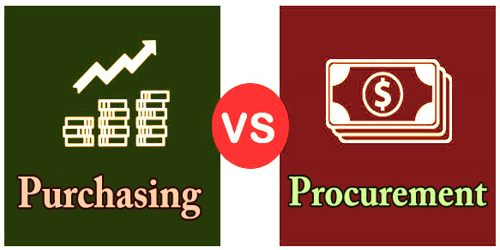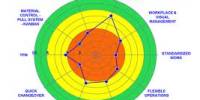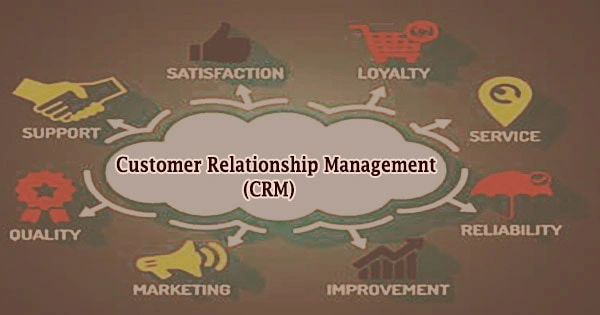Purchasing is an activity that’s a subset of the Procurement process. Procurement involves sourcing and gets of products, services, and works from the external source, so on fulfill the organization’s requirement and operate profitably and efficiently. Procurement involves every kind of acquisition including leasing, renting, and contracting to rearrange the products or services. Contrarily, Purchasing merely concerns with the buying action and includes paying for the goods/services bought or received on credit.
Definition of Purchasing –
The purchasing process is a sub-process of procurement and focuses on the transactional phase associated with buying products and services. Activities involved within the purchasing process include creating purchase orders and ordering products/services, or receiving products and arranging payment. The key focus of purchasing is being able to achieve short term goals that include quantity, costs, and timing.
Purchasing Activities:
- Obtaining purchase requisition
- Inviting proposals and evaluating bids
- Dispatching purchase orders
- Advance shipment notice
- Receiving and inspecting goods
- Recording invoice
- Conducting three-way matching
- Payment to supplier
Definition of Procurement –
The procurement process flow is the strategic process of sourcing a product or service. This includes identifying a specific product or service requirement and the steps on how a business finds new or existing suppliers, builds supplier relationships, measures cost savings, minimizes risk, and is predominately focused on value and return on investment.
Procurement Activities:
- Identifying the needs
- Authorizing the purchase request and approving it.
- Inviting quotations from suppliers.
- Receiving quotations and negotiating terms
- Identifying and Selecting the supplier
- Negotiating
- Agreeing terms
- Preparing purchase order
- Receipt of goods and its inspection
- Conduct three-way matching
- Shipping management
- Receiving invoice
- Making payment
The Key Differences Between Purchasing and Procurement –
Procurement:
- Without a strategy, goods and services are ordered as needed. Reactive purchasing comes with a host of money-wasting issues. Businesses that buy on-demand without approved purchase orders (PO) typically lack oversight and budget control.
- Purchasing implies that function of the organization which involves buying of goods and services to fulfill the company’s requirement of carrying out the production process.
- Purchasing is a reactive process, in the sense first of all the requirement of goods is recognized and then the suppliers are invited to bid.
- Purchasing requires receipt of goods and services. A good purchasing strategy includes protocols for recording and tracking purchases.
- In companies with no procurement department, invoices are usually sent to accounts payable. With no automated tracking system, each invoice recording must be verified by hand, an inefficient and time-consuming process prone to error.
- Purchasing is a direct process involving buying the commodity for price. While purchasing stresses on making the transactions efficient, and do not lay much emphasis on developing a relationship with suppliers/vendors, procurement is a bit opposite.
- Invoices are typically paid without completing the 3-way match to verify the invoice against the purchase orders (PO) and packing slip. Common results of the poor strategy include late payments, over-payments for items not delivered, and duplicate payments.
- Purchasing activity is commonly adopted in a wholesale environment, i.e. where the goods are to be purchased in wholesale for the purpose of resale. It involves activities like placing orders, expediting, and making payment.
Procurement:
- Procurement is nothing but the sourcing or arrangement of goods and services which includes soliciting bids, negotiating the terms, checking the quality of purchased items and making payment, etc. to fulfill the needs of the company.
- Procurement department responsibilities include ensuring that company values are upheld and raw materials are sourced in ethical, legal, and customer-approved ways.
- Procurement departments determine the most efficient and timely ways to receive goods.
- Procurement focuses on developing a long and strong relationship with the suppliers. So, we can say that purchasing has a transactional focus, but procurement has a relational focus.
- Procurement is associated with acquiring the goods or services, machines, supplies, equipment whether on rent, lease or contract basis.
- Procurement strategy includes identifying the best possible quality at the lowest price. It involves all the steps that lead to the obtaining of commodity, whether it is taken before, during or after the purchase.
- Procurement uses a tendering or competitive bidding process to request proposals from trusted suppliers and ensure the lowest price and most favorable payment terms after all other considerations are factored.
- Procurement is adopted in a production environment wherein the raw materials are to be bought for undertaking the production process. It involves both sourcing and purchasing activities, like identification of need, sourcing, payment, contract closure, and record-keeping.
- Procurement strategy facilitates ordering and eliminates bottlenecks by establishing governing rules for automated purchases and defining the process for goods and services requiring approval.
Procurement automation can help procurement and purchasing professionals streamline the method of product and repair acquisition by removing repetitive data entry, improving the approval workflow process, and enhancing report generation. Automating key activities will facilitate us to extend the visibility of important information and aid in deciding. Automated procurement systems will enable employees to focus on core activities to feature further value within the business like procurement strategy and improve supplier relationships.
Information Sources:
















